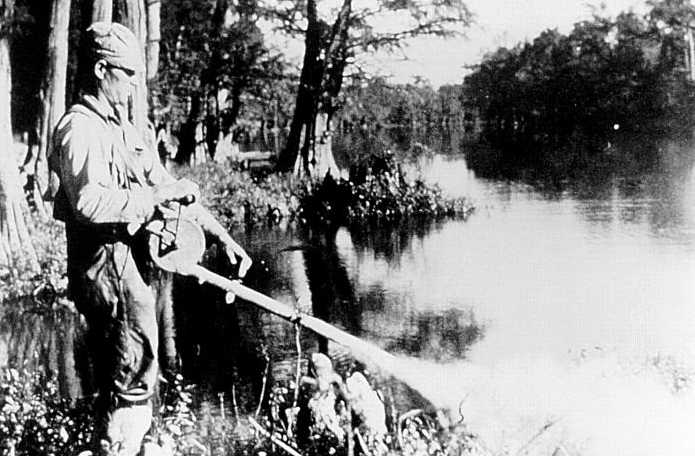Cohn noted that a four-fold increased risk is 400 percent. Another risk, twice-a-day alcohol consumption, is associated with a 40 percent increased risk. Benign breast disease is associated with a 53 percent increased risk.
The study was published in the Journal of Clinical Endocrinology and Metabolism and was done in conjunction with researchers at UC Davis and the California Department of Toxic Substances Control.
DDT was banned in the U.S. in 1972 and is seen as the issue that launched the modern environmental movement. It was used widely in the 1950s and 1960s.
"It was nearly a ubiquitous exposure, and the levels were high, not just in California, but worldwide," Cohn said. "During that time most, or nearly most, of all humans of that generation were exposed to DDT."
It was used broadly in consumer products including "wallpaper impregnated with DDT to control flies," Cohn said, as well as bug sprays and sprays on crops.
Apparent First
Still, Cohn said more research is needed to confirm this analysis. "The point of this study is not to be alarmist," she said.
The breast cancer risk for a 50-year-old woman of being diagnosed with breast cancer in the next 10 years is 1 in 42, according to the National Cancer Institute.
In a statement, Elizabeth Ward, Ph.D., and a senior vice president with the American Cancer Society, referred to the "unique resource" the researchers had analyzed and noted that the review of in utero exposure to DDT "appears to be a first."
Still, Ward added, "Unfortunately, there may be few opportunities to replicate these findings, and because of the small sample size of the study –- with only 103 breast cancer cases -- the results should be interpreted cautiously.”
The gold standard of clinical research is the randomized control trial, but it's not possible ethically to give DDT to people, because of its known risks. Instead, Cohn said, the next step would be animal studies to confirm what was seen in humans is also seen in animals.
Many animals go through their life cycles faster than humans, she said. "Those are the studies that would then be able to discover and better address causation and perhaps find the mechanisms for these effects." That would be the first step toward prevention, Cohn said.
Previous studies have found that DDT is a hormone disruptor, that it interferes with estrogen's function. Karuna Jaggar, executive director of Breast Cancer Action, an advocacy group, said this study was an important addition to the body of research that "points firmly in the direction" of identifying causes of breast cancer.
"DDT is not the only chemical that acts in this way, and if we are concerned about DDT's effect on breast cancer, we should be concerned about many other hormone disruptors' effects on breast cancer," Jaggar said.
She specifically mentioned bisphenol A (BPA), used in many plastics, and phthalates, commonly used in beauty products, as examples.
A meta-analysis -- a "study of studies" -- in 2014 found no association between DDT exposure and breast cancer risk for women who were directly exposed. But Cohn said it's likely both are true -- that the critical exposure is in utero, that there is no evidence of risk if exposed later in life.
DDT is still used in other parts of the world, especially in Africa and Asia, to control the spread of malaria. Cohn says she is "not an anti-DDT person," but does believe that policymakers should be aware of this potential additional harm of DDT.
Meanwhile, Cohn says that additional research using the 50-year-old samples are underway, including looking at the third generation of women -- age of start of menstruation, for example, as well as a study of the impact of stress on breast cancer risk.
